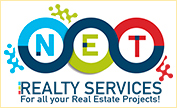Managing Increased Home Insurance Costs
Managing Increased Home Insurance Costs

Homeowners across the United States are grappling with escalating insurance premiums that are having a significant impact on housing affordability and influencing real estate transactions. This article examines the factors driving these increases and offers strategies for homeowners to mitigate rising insurance costs.
Escalating insurance premiums
In recent years, the cost of homeowners insurance has skyrocketed across the country. According to the National Association of Insurance Commissioners and Policygenius, the average annual premium will increase from $1,272 in 2019 to $1,905 in 2023 – a 50% increase. Several factors are contributing to this trend, including the increased frequency of natural disasters, inflation in construction costs, and insurers reassessing risk in different regions.
Natural catastrophes and rising losses
Natural catastrophes have become more frequent and severe, resulting in significant insured losses. For example, insured losses from natural catastrophes are projected to reach nearly $125 billion in 2022, exceeding the 10-year average of $81 billion. This surge in losses has prompted insurers to raise premiums to offset their increased liabilities.
Inflation and reassessed risks
Inflation in building materials and labor has also played a role. The cost of rebuilding or repairing homes has escalated, forcing insurers to adjust premiums accordingly. In addition, insurers are reassessing the risks associated with certain areas, particularly those prone to natural disasters, resulting in higher premiums or, in some cases, the withdrawal of coverage options.
Impact on homeowners
The impact on homeowners is multifaceted. Increased insurance costs increase the overall cost of homeownership, potentially pricing out prospective buyers and putting financial strain on existing homeowners. In high-risk states like Florida, some residents have seen rate increases as high as 400%, and an increasing number are receiving cancellation notices from insurers. These rising costs can also affect real estate transactions, as buyers may reconsider purchasing in areas with exorbitant insurance rates, and sellers may find it difficult to attract buyers.
Strategies to mitigate rising costs
Homeowners have several options to address the burden of rising insurance premiums. Increasing deductibles is one of the easiest ways to reduce premium costs. For example, increasing a deductible from $500 to $1,000 can reduce premiums by about 25%. Installing home safety measures, such as security systems, smoke detectors and fire alarms, can make a property less risky to insure and may qualify homeowners for discounts. Bundling homeowners insurance with auto insurance from the same provider can also result in savings of up to 30%. Maintaining good credit is another key strategy, as insurers often use credit-based insurance scores to determine premiums. Finally, homeowners should regularly compare quotes from different providers to ensure they are getting the best possible rate.
In summary, rising homeowners insurance premiums pose a significant challenge to affordability and the real estate market. By understanding the factors driving these increases and taking proactive measures, homeowners can better manage their insurance costs and make informed decisions about their properties.
Ivania Alvarado Lic. Real Estate Broker
Net Realty Services
Miami, FL 33165
Email: netrealty16@gmail.com
Phone: (305) 401-4516
I take the time to listen carefully to understand my client’s needs, wants and concerns. I will be ready to take quick action when required and spend more time with those who aren’t quite sure which direction to take. My genuine concern for my client’s best interests and happiness ensures the job is done!

